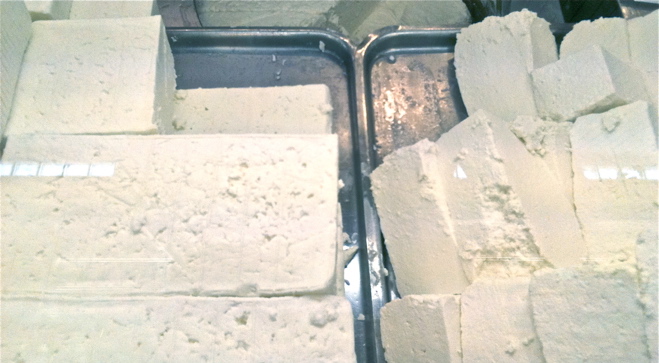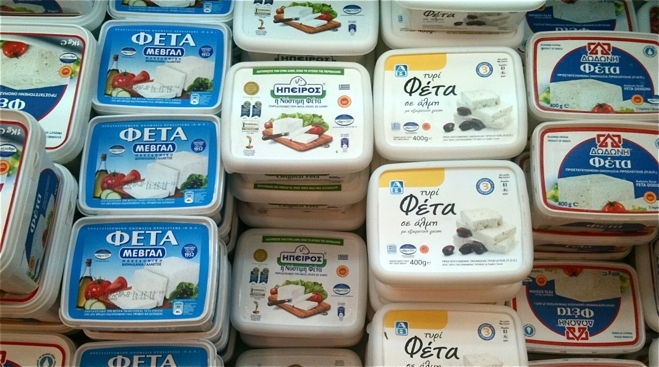GREEK FETA

When you have been eating feta since you were a baby , you just know what is good feta and what is bad feta. But there are certain things you need to know, especially if you are new to feta.
Greeks know their cheese; several statistics place the Greeks as the highest consumers of cheese in the world (French come second). The average Greek consumes about 23-30 kg of cheese a year. Blame it on the feta; at least half of that cheese consumed is feta.
Here are some points to keep in mind when choosing feta.
1. Look for feta made in Greece-it’s the only one that is real feta.
2. Make sure it only contains sheep’s milk (and maybe some goat’s milk), rennet and salt. It should not contain anything else nor should it contain cow’s milk.

3. Taste it.There are 3 different types of feta based on the texture: hard, medium-hardness and soft. There are also different aromas: some are saltier, some are spicy and some are mild. This all depends on what area and in what kind of container the feta is matured. Most Greek people have a favorite feta and they always buy that one. But you can also use different types of feta for different recipes. For example feta for a cheese pie- tyropita maybe saltier.
4. Feta should be white-not yellowish. If it is a bit yellow, that means that the cheese has been exposed to air outside of the brine.
5. Feta should have a tangy flavor and a rich aroma. It should not taste bitter, sour, tasteless.
6. It should have a few tiny holes on the surface.
1. Feta is real feta if it is produced in
a. Greece
b. Cyprus
c. France
d. Italy
2. It must contain ............. milk
a. sheep's
b. cow's
c. pork's
d. buffalo's
3. Feta must be
a. white
b. yellow
c. yellowish
d. blue
No hay comentarios:
Publicar un comentario